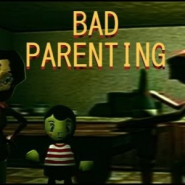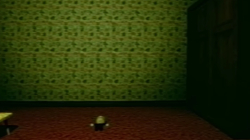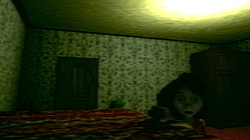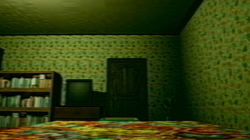
Bad Parenting
All trademarks belong to their respective owners.Details
I first stumbled upon the game Bad Parenting while browsing through an indie game showcase, and I must admit that my curiosity was instantly piqued by its intriguing title. The concept of experiencing the challenges of parenting in a humorous, exaggerated way sounded like a promising twist on typical simulation games. Upon downloading it, I found myself immersed in an experience that both amused and challenged my perspective on family dynamics. The initial moments felt experimental, as if I were stepping into a world where everyday parental responsibilities were turned into a quirky dance of chaos and comedy.
Exploring the Gameplay Dynamics
From the very start, I noticed that the game’s mechanics were designed to keep the player on their toes. The gameplay is structured around a series of objectives that demand both rapid decision-making and long-term strategy. Managing the well-being, schedules, and eccentric needs of virtual children quickly became an engaging puzzle that required my full attention. I was drawn into a system where multitasking was not just encouraged but necessary. Every in-game event—be it preparing a spontaneous school project or managing unexpected home emergencies—presented a new challenge that tested my resourcefulness. The interplay between tasks demanded a level of concentration that made each session feel fresh and unpredictable.
The Art of Satirical Storytelling
Bad Parenting does not take itself too seriously, and that is one of the game’s most refreshing aspects. The narrative is peppered with tongue-in-cheek humor that pokes fun at conventional family stereotypes and the pressures of modern parenting. I enjoyed how the storyline effortlessly transitions from light-hearted absurdity to moments that resonated with genuine emotional complexity. As I navigated through the various scenarios, the game invited me to reflect on the underlying satirical message—one that examines our expectations of parenthood while simultaneously offering an outlet for playful self-expression. The narratives and dialogues are crafted with a distinct voice, making the overall experience feel like a personal epic of ironic proportions.
The Challenge of Multitasking in a Virtual Home
One of the more demanding elements of Bad Parenting is the simulation of a chaotic household. The interface presents multiple aspects of a family environment, each teeming with its own set of demands and intricate details. I found myself juggling between scheduling playdates, overseeing school assignments, and managing the playful mischief of my in-game offspring. This multitasking element is not for the faint-hearted; it forces you to prioritize actions swiftly while accepting that sometimes not every need can be met perfectly. This tension between order and chaos delivers an intensity that kept my adrenaline at a steady pace, every action supplementing the narrative in an unpredictable yet satisfying manner.
The Visual Flair and Aesthetic Appeal
The aesthetic design of Bad Parenting is as bold as its humor. The art style employs a mix of cartoonish exaggeration and subtle nods to realistic family life, creating a visual narrative that is both engaging and distinctive. I found the character designs to be memorably quirky, with each family member portrayed in a way that highlights their unique personality traits. The vibrant color palette and playful animations serve as a visual feast, making even the routine tasks feel visually stimulating. The backgrounds are rendered in meticulous detail, and the interactive elements incorporate a freshness that invites you to take a closer look at the scene unfolding before you. For me, each visual element reinforced the game’s overall whimsical atmosphere.
Immersive Audio and Musical Composition
The audio experience in Bad Parenting complements the visual and narrative elements beautifully. From a catchy, upbeat soundtrack that plays during moments of light-hearted chaos to the subtle ambient sounds that emphasize the empathetic undertones of the parental struggle, every auditory cue helps to deepen the immersive quality of the game. I particularly appreciated how the sound effects adapt dynamically to the unfolding gameplay. Whether it is the clamor of a messy kitchen or the gentle murmur of children playing in the background, the sound design always manages to capture the essence of everyday family life in its own exaggerated way. The voice acting, filled with mild sarcasm and earnest expressions, further underscores the game’s commitment to delivering an unconventional yet resonant player experience.
Delving into Unconventional Parenting Strategies
What truly sets Bad Parenting apart is its playful take on the dilemmas parents face. Throughout my play sessions, I encountered situations that forced me to experiment with unconventional strategies to balance the household’s needs. The tasks often required me to prioritize in ways that made me think outside the box. For example, the simulation sometimes presents overlapping crises that demand a quick pivot in strategy, challenging me to defer minor issues in favor of handling more pressing ones. I found this mechanic particularly engaging because it mirrors the real-life process of evaluating priorities under pressure. The game continuously tested my ability to remain calm and decisive, making every solution a small personal victory.
Humor as a Catalyst for Reflection
Humor plays a central role in transforming the more overwhelming aspects of the gameplay into moments of levity. The writing in Bad Parenting is clever and self-aware, using absurdity to highlight the contradictions within the expectations of modern parenting. I relished the humorous banter and situations that were deliberately over the top, as they provided a welcome break from the more complex management challenges. This blend of comedy and simulation provides both entertainment and an opportunity to reflect on the sometimes overwhelming demands of balancing family and personal identity. Every quip, every surreal in-game moment, added layers to the narrative, ensuring that while I was managing a virtual household, I was continuously entertained and engaged on a cognitive level.
The Evolution of In-Game Relationships
Interactions among characters are a defining characteristic of the game, and I was quickly drawn into the evolving relationships depicted on the screen. Each interaction, whether it was between parent and child or between siblings, was crafted with careful attention to the realistic nuances of familial bonds. The game’s dialogue system allowed me to influence these relationships, making choices that could either soothe tensions or provoke unexpected reactions. I appreciated this interactive approach since it added an element of personal agency to the experience. Every decision felt consequential, and the dynamic interactions with the in-game characters transformed what could have been a straightforward simulation into a complex narrative web of trust, misunderstanding, and reconciliation.
The Allure of Detailed, Immersive Narratives
The narrative depth in Bad Parenting is commendable. I was drawn into stories that unfolded in layers, with each chapter revealing more about the characters and their personal struggles. The narrative is not linear, allowing me to experience situations from multiple perspectives. This open-ended storytelling gave me the freedom to explore different outcomes and understand the multifaceted nature of family relationships. Each in-game event, whether planned or spontaneous, contributes to a rich tapestry of moments that are humorous, chaotic, and sometimes even poignantly serious. As I progressed through the game, I began to see how every decision interweaved with a larger thematic discussion about society’s expectations of parents and children alike.
The Intricacies of Control and Customization
I was particularly impressed by the control system and the options available for customization. The leaves of each decision tree in the game can lead to entirely unexpected outcomes, a feature that dramatically increases the replay value. I enjoyed tinkering with various settings to see how subtle changes could impact my experience. This customization allowed me to tailor my gameplay style to my personal preferences, making the challenge both accessible and rich with possibilities. Adjusting the pace of in-game events and even modifying the types of challenges presented to me made each playthrough a unique adventure. It felt like a canvas where I could experiment with diverse parental styles, each with its consequences and rewards.
The Influence of Real-Life Parenting Themes
Despite its overtly humorous tone, Bad Parenting resonates with many of the challenges faced in real life. The dilemmas that the game presents, though exaggerated for comedic effect, often reflect the balancing act of modern parenting. I found myself reflecting on everyday decisions that many parents grapple with, albeit in a hyperbolic context. The game’s ability to draw parallels between its virtual challenges and real-world scenarios serves as a subtle reminder of the inherent complexities and contradictions of raising a family. Amid the chaos and levity, there is a poignant undercurrent that speaks to the vulnerabilities and triumphs of parenthood, inviting me to consider these themes from a fresh, ironic perspective.
The Role of Timing and Patience in Gameplay
Timing is everything in Bad Parenting, and I soon realized that patience is as valuable a resource as any in the game. Many of the game’s challenges require waiting for the right moment to act, and in some cases, deliberate inaction can lead to a better outcome. I appreciated that the game does not force rapid-fire decisions at every turn. Instead, it rewards me for timing my actions carefully. This aspect of the gameplay mirrors the often unpredictable pace of real family life, where sometimes the best course of action is to wait and see how a situation evolves. The emphasis on timing provided me with a unique strategic layer that enriched the overall experience and demanded sustained focus over long sessions.
The Impact of Replayability and Emergent Experiences
Every time I revisited Bad Parenting, I discovered new challenges and hidden narratives that I had previously overlooked. The game is built with an impressive level of replayability, thanks to its dynamic story elements and the variety of scenarios that can emerge based on my choices. I enjoyed exploring different paths, each of which offered a fresh perspective on the central theme of the game. This ability to uncover unexpected story arcs and nuances in family dynamics kept me engaged over multiple sessions. The emergent gameplay meant that even simple actions could trigger unforeseen consequences, making each playthrough feel like a new exploration of the same intricate world. The thrill of uncovering these unique moments contributed greatly to my overall enjoyment of the game.
























